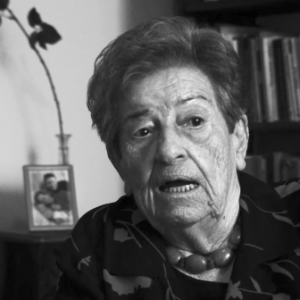| Version | Educational DVD, Home DVD |
|---|
The Warsaw Ghetto (1940-1943)
$19.99 – $250.00
Educational DVD $250.00
Click below description to buy
Stream version here
Stream Educational version here
The Warsaw Ghetto 1940-1943 is documentary project that features three films. The main film is 912 Days of the Warsaw Ghetto (37 min.), and the two short ones are Children in the Ghetto and Warsaw Ghetto Uprising. These films were created for the Jewish Historical Institute as part of its permanent exhibit on the fate of Warsaw’s Jews during the period from 1939 to 1945. They present the daily lives and deaths of those imprisoned in the ghetto, their hopes and efforts to survive, their armed resistance and struggle, and finally their total extermination. Unique Polish and German archival materials were used in the preparation of these films.
Before World War II, Warsaw was the biggest Jewish community in Europe and second largest in the world after New York; over 380,000 Jews lived there. It was the most important center of Jewish culture in Poland and one of the most important in the world. In the fall of 1939, when the Germans attacked and occupied Poland, they started their brutal, anti-Semitic campaign at once. In October of 1940, the Germans ordered all Warsaw Jews into one district designated especially for them, which was then surrounded by a three-meter-high wall. The Jews, under threat of the death penalty, were not permitted to leave the ghetto. Later, about 100,000 Jews from the outskirts of the Warsaw region were also moved into the ghetto; more than half a million were forced behind the walls. Dramatically difficult living conditions in the ghetto, extreme crowding and lack of employment, were further intensified by hunger and epidemics that were intentionally brought on by the occupiers.
By July 1942, over 100 000 people had died as a result of hunger and diseases. Despite the inhuman conditions created by the German occupiers, the Jews tried to do everything in their power to save their own population in the ghetto, both morally and physically, with the help of openly-functioning and underground organizations. The greatest care was directed towards children. A civil resistance group, focused around historian Dr. Emanuel Ringelblum, secretly recorded the situation of the Jews in these difficult times. The Ringelblum Archive (currently part of the collections of the Jewish Historical Institute) was found in the ghetto ruins after the war. Organizations of armed resistance were also created, but they had enormous difficulties in obtaining arms. On July 22, 1942 the Germans began the deportation of the ghetto population into the death camp in Treblinka, 100 km away. Six to ten thousand people per day were taken away in cattle trucks.
As a protest against the Nazi terror, Adam Czernikow, the chairman of the Judenrat, committed suicide on July 23, 1942. By the end of September, over 300,000 Warsaw Jews had died in the gas chambers of Treblinka, and among them was the world-famous writer and educator Janusz Korczak, together with the children and staff of his orphanage. From what was left on the ghetto’s population, a drastically reduced ghetto – a so-called “rump ghetto” – was created, in which 30,000 Jews working for the Wehrmacht and in the Judenrat’s agencies remained alive… for awhile. At least another 30,000 took cover in the ghetto.
In January 1943, the Germans attempted to annihilate the ghetto population, but were unsuccessful as they had encountered armed resistance. On April 19, a day before the Jewish Passover holiday, the Germans began their second attempt. Again they encountered the armed resistance of Jewish fighting squads, but the Germans came prepared this time and used much greater force than in January. The German answer to the resistance of a few hundred poorly armed Jewish fighters was to burn the ghetto down, making it impossible for the fighters to hide in the buildings and cellars of the district. All of those emerging from the burning, wrecked and bombed-out houses and bunkers were either killed instantly or taken to the death camps. On May 17, 1943, S.S. divisions, police troops and units of Ukrainian and Latvian collaborators achieved a victory in this uneven battle. The Warsaw ghetto had ceased to exist.





Reviews
There are no reviews yet.